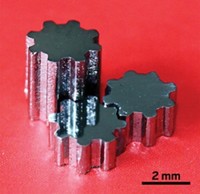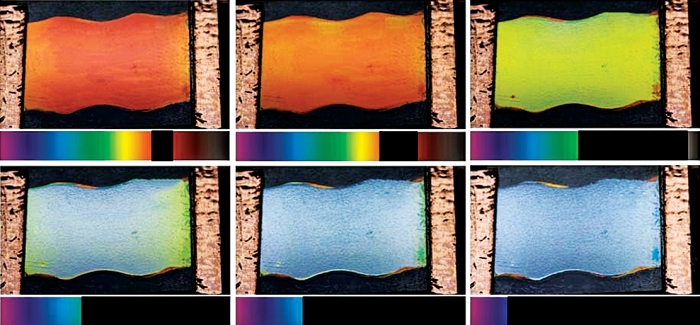Advertisement
Grab your lab coat. Let's get started
Welcome!
Welcome!
Create an account below to get 6 C&EN articles per month, receive newsletters and more - all free.
It seems this is your first time logging in online. Please enter the following information to continue.
As an ACS member you automatically get access to this site. All we need is few more details to create your reading experience.
Not you? Sign in with a different account.
Not you? Sign in with a different account.
ERROR 1
ERROR 1
ERROR 2
ERROR 2
ERROR 2
ERROR 2
ERROR 2
Password and Confirm password must match.
If you have an ACS member number, please enter it here so we can link this account to your membership. (optional)
ERROR 2
ACS values your privacy. By submitting your information, you are gaining access to C&EN and subscribing to our weekly newsletter. We use the information you provide to make your reading experience better, and we will never sell your data to third party members.
Inorganic Chemistry
Robust thermochromic crystals change color with changing temperatures
The multicolored oxides are stable at high temperatures and could find use in automotive and aerospace applications
by Prachi Patel, special to C&EN
February 8, 2019

Researchers have made a new family of materials in a rainbow of hues that can change color as they are heated and return to their original color when cooled (Chem. Mater. 2019, DOI: 10.1021/acs.chemmater.8b04694). The combination of the range of colors plus the ability to change color reversibly at high temperatures could open up new applications for such thermochromic materials.
Thermochromics find use in temperature-indicating labels, sun-protecting glazing, and even in mood rings and rewriteable paper. They are typically organic liquid crystals or dyes. Heating the materials changes the arrangement of the molecules, which alters the color of light the materials reflect. However, these organic materials typically degrade at temperatures around 100 °C.

Looking for more robust color-changing materials, researchers have turned to inorganic metal oxides. Vanadium dioxide is the best known and is being studied for smart window coatings. But it and other inorganic thermochromic materials found so far have a limited palette, says Long Yuan, a chemist at Jilin Normal University.
Yuan, Changmin Hou, and their colleagues used an erbium gallium oxide that has a garnetlike crystal structure. They doped the oxide with one of four metal ions: chromium, manganese, iron, or cobalt. Each resulting compound had a different color at room temperature—green, red, light yellow, and cyan, respectively—and their colors could be tailored by adjusting the dopant level. Then, as the researchers gradually heated the materials to 460 °C, the colors slowly changed. Generally, they turned darker, but some of the doped materials exhibited more dramatic transformations.
Advertisement
Cobalt doping gave the most notable thermochromism. Increasing the amount of cobalt led to samples that went from light cyan to turquoise to yellow-green to dark-green. Upon heating, these materials became yellow, orange-yellow, orange-red, and brown, respectively. For all dopants at all concentrations, the colors reverted when the temperature decreased.
To make the compounds, the researchers grind the desired mix of elements in a mortar and then heat the blends at 1,200°C for 24 hours, followed by two more heating cycles to 1,400°C. The method should be easy to scale up, Yuan says. The researchers now plan to explore using other dopants to make more thermochromic colors and to identify and develop practical uses for the materials.
“The materials presented here are unique,” says Diane Sellers, a chemist at Texas A&M University. “They are stable and reversible well above 350 °C, which widens the scope of potential applications.” Unlike other thermochromic materials, which show a drastic color change at a specific temperature, the color of these crystals evolves gradually as they get hotter. This is the most interesting part of the materials, she says, but might keep them from being used in applications that demand a striking color change. She envisions use on metallic kitchen appliances and cast iron pots, or on automotive and aerospace parts, to indicate temperature ranges.




Join the conversation
Contact the reporter
Submit a Letter to the Editor for publication
Engage with us on Twitter